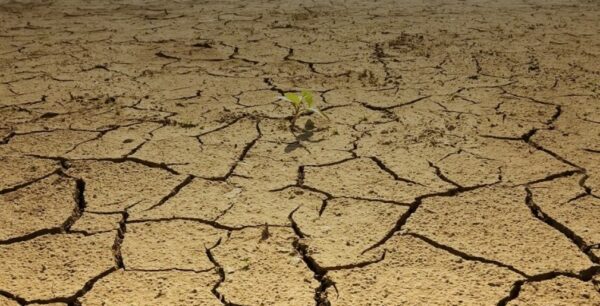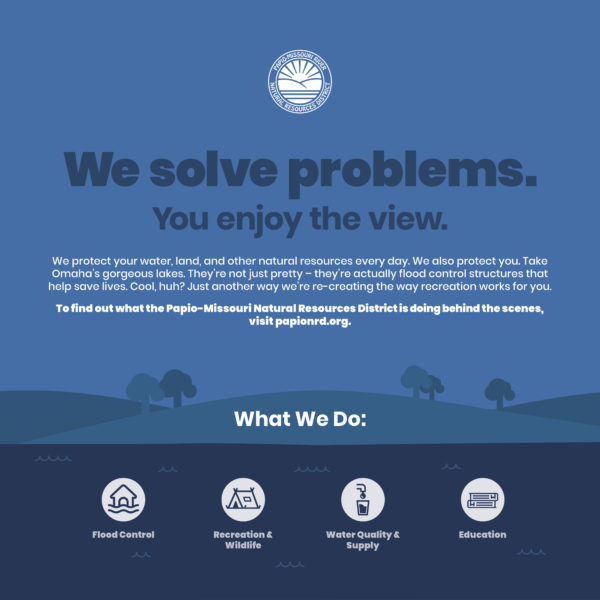Below normal precipitation and warmer than normal temperatures continue to affect streamflow in the Lower Platte River Basin
The Lower Platte River Consortium is encouraging the public to be proactive in conserving water. Moderate to exceptional drought is present in the Lower Platte Basin. According to the Climate Prediction Center’s Seasonal Drought Outlook, drought is expected to improve somewhat; but it is expected to persist over the summer months.
The Platte River is a vital water source for the state of Nebraska. Most of the state’s population, including the communities of Omaha, Lincoln, and Fremont, rely on groundwater wells replenished by the Platte River. The Platte River also recharges wells for agricultural irrigation in the Platte River valley, provides habitat for fish and wildlife, and opportunities for recreation.
Weather significantly impacts flows in the Platte River. Other contributing factors include snowpack in Colorado and Wyoming and runoff from rainfall throughout the Platte River area. Nebraska experienced the fourth driest year on record in 2022, with most of the state receiving less than 70% of normal precipitation according to data from the National Oceanic and Atmospheric Administration and still faces a precipitation deficit. Although recent precipitation has occurred, soil moisture levels are below average limiting the amount of runoff into the Platte River.
The Platte River experienced significantly below average flows during the Summer of 2022, and similar conditions have persisted this spring and are expected to continue throughout the summer months. As summer approaches, with already low stream flows, further decreases can limit the amount of water available in wellfields along the Platte River used by major cities in Nebraska.
The Lower Platte River Consortium asks for the public’s assistance in conserving water to prepare for possible persistent drought conditions. The Consortium will communicate with the public regarding additional conservation assistance if the Lower Platte River basin continues to experience below average precipitation.
“The Papio NRD will continue to work with the Consortium to monitor and share information with the public on the drought as we expect drier conditions again this year,” said General Manager John Winkler. “Water conservation is an important step that every individual can participate in to help protect our resources.”
The Nebraska Department of Natural Resources maintains an online dashboard available to the public that displays current drought conditions and outlooks. https://gis.ne.gov/portal/apps/experiencebuilder/experience/?id=c0b751c512a24b83a6ad1c3214941ea8
Further information about drought can be heard on the NeDNR podcast, “Around the Water Cooler,” in the episode released May 31, featuring interviews with several Consortium representatives.
The Lower Platte River Consortium will continue to monitor the conditions and work with individuals and communities to conserve water as necessary.
###
About the Consortium
Formed in 2016, the consortium consists of six different entities (agencies) that monitor or rely on the Lower Platte River for their water supply. These agencies include:
- Lower Platte South NRD
- City of Lincoln Water System
- Lower Platte North NRD
- Nebraska Department of Natural Resources
- Papio-Missouri River NRD
- Metropolitan Utilities District



